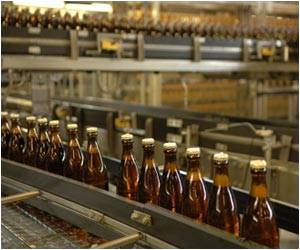While heavy drinking has consistently been linked to an increased risk of intimate partner violence (IPV), a new study has found that both drinking patterns
* Heavy drinking has consistently been linked to an increased risk of intimate partner violence (IPV).
* New findings indicate that drinking patterns as well as neighborhood characteristics can influence IPV.* While specific effects differ by gender; women who are the heaviest drinkers are at elevated risk for mutual IPV despite the context of their neighborhood.
While heavy drinking has consistently been linked to an increased risk of intimate partner violence (IPV), a new study has found that both drinking patterns and neighborhood characteristics can contribute in different ways to mutual IPV among married/cohabiting adults in the general population.
Results are published in the June issue of Alcoholism: Clinical & Experimental Research.
The link between heavy drinking and increased risk of IPV is fairly well established, according to Carol B. Cunradi, senior research scientist at Prevention Research Center and sole author of the study. However, she noted, IPV researchers are increasingly examining the role of other factors that may exacerbate this link.
"Social disorganization theory, along with other macro-sociological theories, incorporate the larger environmental context of people's interactions within their neighborhood context into explanations of the conditions under which problem behaviors such as IPV may grow and thrive," explained Cunradi. "IPV, like child abuse, typically is a ‘private’ event that occurs in the home; social disorganization theory suggests that it is essential to consider the neighborhood conditions in which the home is located."
Advertisement
Researchers examined the responses of 19,035 married/cohabiting adults (non-Hispanic black, Hispanic, and non-Hispanic white) who participated in the 2000 National Household Survey on Drug Abuse.
Advertisement
"Although there is a growing consensus that drinking and drug use increase the chance of IPV, this investigation drives home the point that we must understand the contextual factors that may influence how individuals may behave when they are intoxicated," said Fals-Stewart. "Thus, if the neighborhood or community is one where violence and other socially negative behaviors, such as drug use and other criminal activity, are likely to occur, the general acceptance for violence – including IPV – may simply be higher than other neighborhoods."
Furthermore, added Fals-Stewart, the vast majority of research thus far on IPV and alcohol use has focused on men and male-to-female violence. "We know far less about the role of women in these episodes, how their drinking may influence their likelihood of being victimized or their likelihood of engaging in IPV," he said. "The fact that there are gender differences in terms of how a neighborhood influences the relationship between drinking and violence suggests that, indeed, alcohol and intoxication have different effects on men versus women in terms of IPV."
Cunradi plans to continue with her research, collecting data on drinking and other factors from both partners in the couple, and measuring the density of alcohol outlets in their neighborhoods as well as other neighborhood characteristics.
"Up until about 25 years ago," said Fals-Stewart, "IPV was a private family matter. However, with increased awareness of IPV and how common it is, IPV is now viewed as a large societal problem and is the ‘business’ of the criminal-justice system, the treatment community, community advocates, and so forth. Furthermore," he added, "there are important public-policy implications for findings such as these; suggesting that a comprehensive approach to IPV would not only include some form of intervention at the individual or family level, but perhaps also at the neighborhood and community level. We need to understand what makes a given neighborhood or community more accepting of domestic violence and determine the best ways to reduce it."
Source-Eurekalert
MED/V











